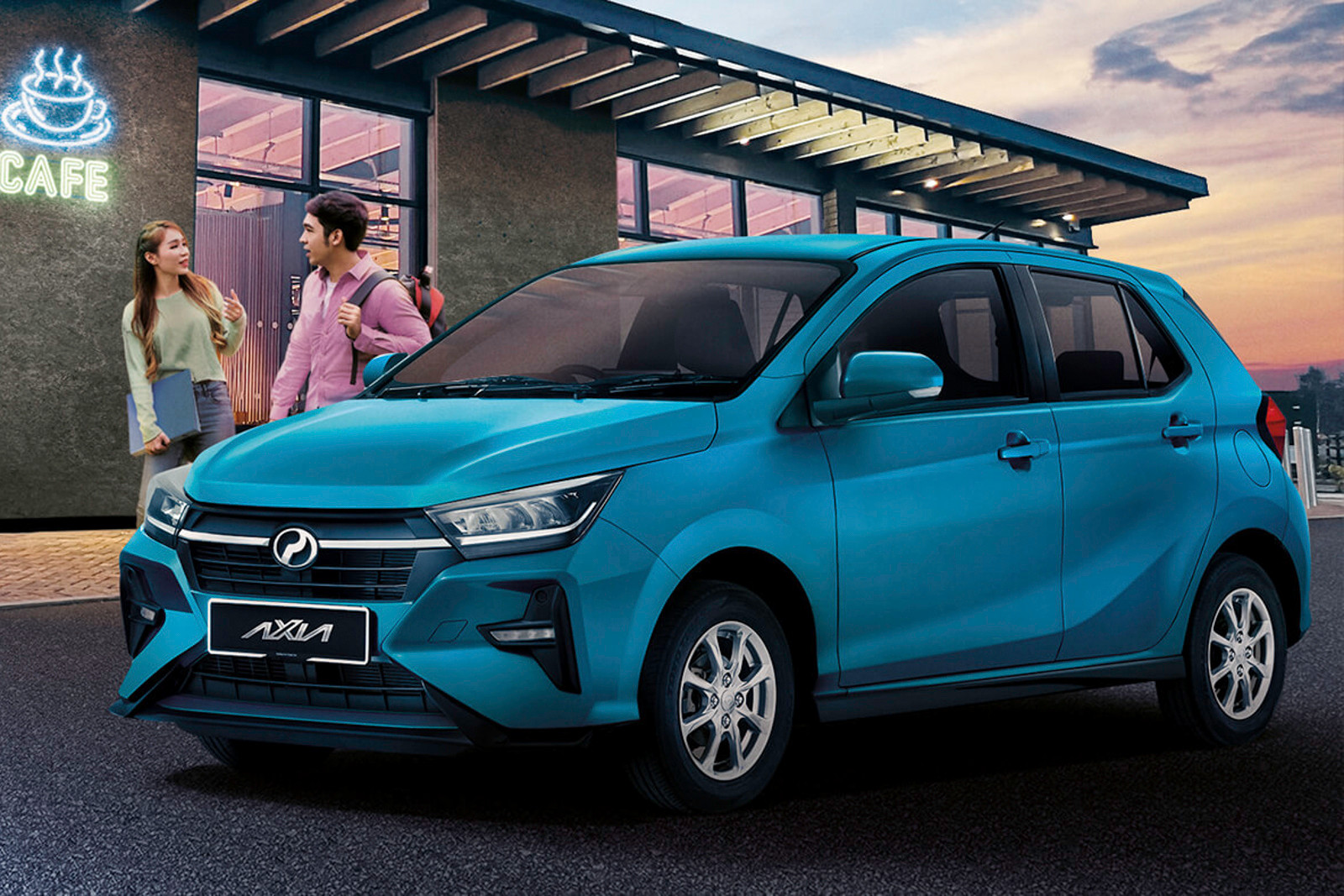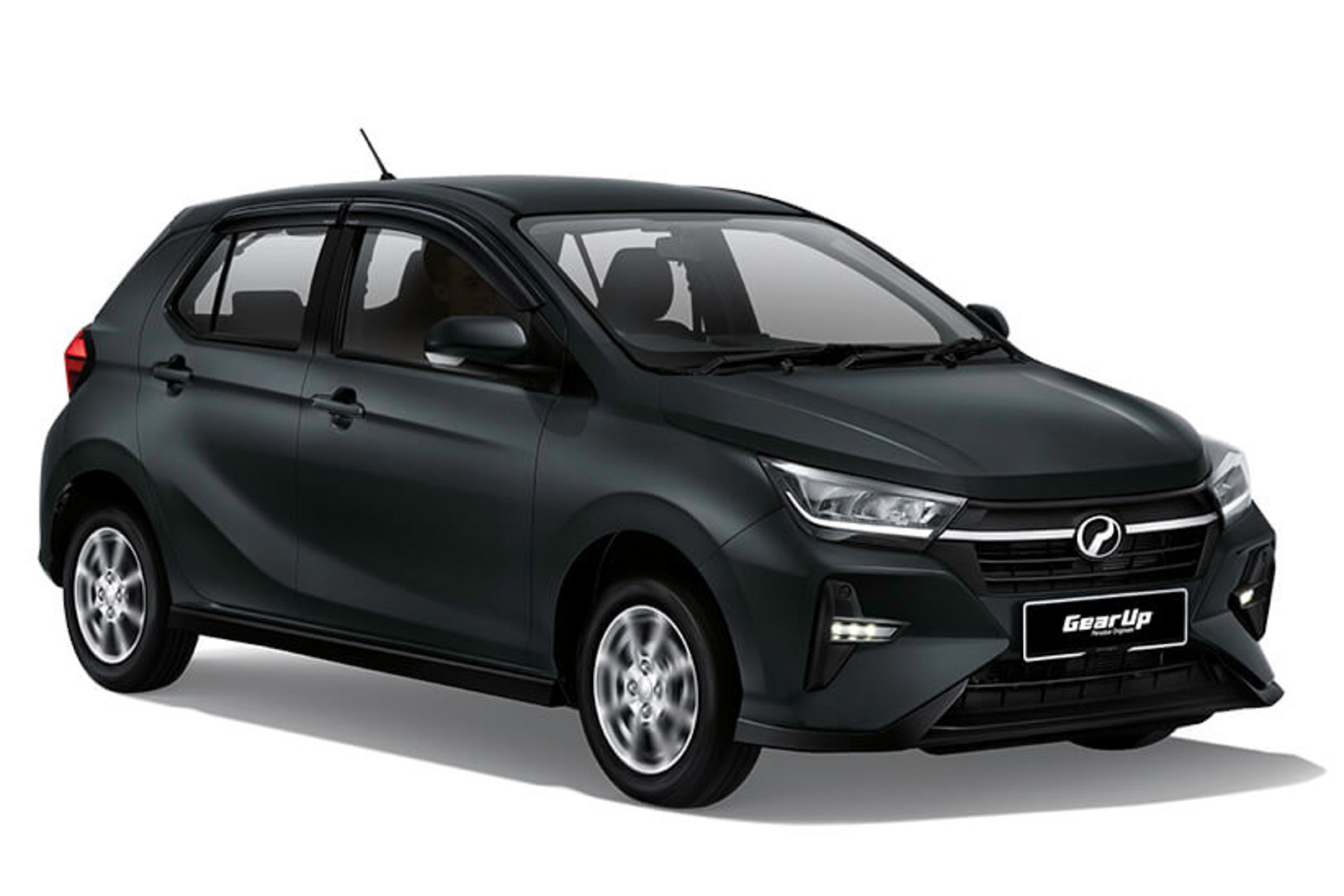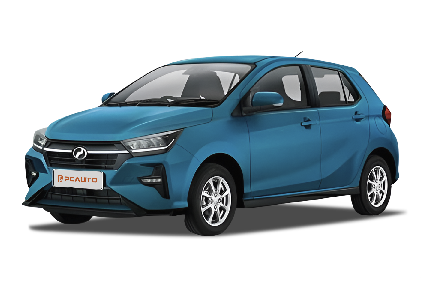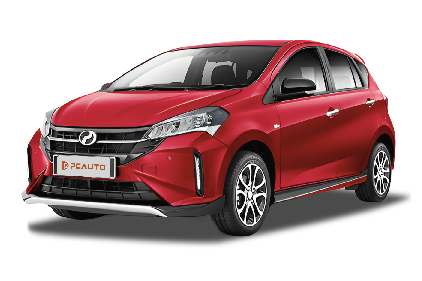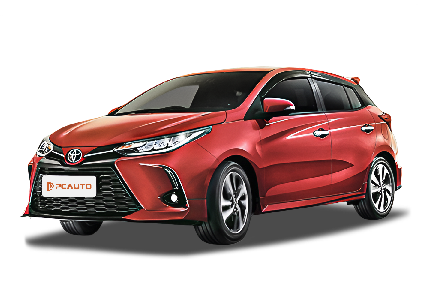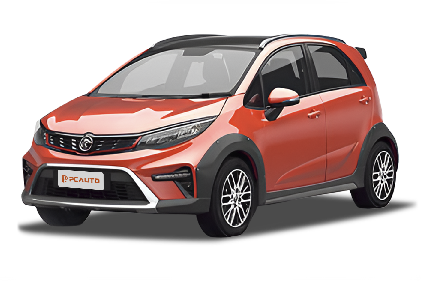Q
What is the new Axia 2019?
Launched back in 2019, the Perodua Axia remains one of Malaysia's go-to choices for an affordable entry-level A-segment car. It's all about being easy on the wallet and packing solid value, making it a top pick for zipping around the city or running family errands.
Visually, it got some nips and tucks to keep things fresh – think a more modern front grille and LED daytime running lights that give it a younger, sharper look. Step inside, and the 2019 Axia upped its game with an upgraded sound system and comfier seat materials. Higher-spec trims even throw in a multifunction steering wheel and touchscreen infotainment, making those drives a bit more enjoyable.
Under the hood, you're looking at a 1.0L three-cylinder engine paired with either a 4-speed auto or 5-speed manual. The real star here? Fuel efficiency. It's a champ at sipping petrol, which is exactly what Malaysian buyers want when it comes to keeping running costs low.
Safety-wise, all Axias come standard with dual airbags, ABS, and EBD. Some models take it up a notch with Vehicle Stability Control (VSC) and Traction Control (TRC), adding that extra peace of mind on the road.
As Perodua's hometown hero, the 2019 Axia stays true to the series' roots of practicality and dependability, while those little upgrades here and there cater to folks wanting a bit more quality. If you're a Malaysian shopper on a budget but still want something that's fuel-efficient, easy to drive, and cheap to maintain, the 2019 Axia is definitely one to check out.
Q
Is Axia 3 cylinder?
Right, the Perodua Axia comes with a 1.0-liter three-cylinder engine, and this little powerplant is all about fuel efficiency and a compact design – perfect for city driving. Especially here in Malaysia, it delivers decent performance while keeping fuel consumption low, which is a big plus in our traffic. Compared to a traditional four-cylinder, losing one cylinder makes the three-pot simpler, lighter, and that helps trim overall vehicle weight and boost fuel economy. Now, sure, three-cylinders can sometimes have a bit more vibration, but modern tech like balance shafts has really ironed that out these days. For Malaysian buyers watching their budget and wanting something economical for daily commuting, the Axia's three-cylinder is a solid, practical pick. It checks all the boxes for local emissions standards and keeps running costs down, even in stop-and-go jams. If you're worried about how smooth it is, though, I'd definitely suggest a test drive first. After all, how a car feels is pretty personal.
Q
What size engine is the Axia?
The Perodua Axia is powered by a 1.0-liter three-cylinder naturally aspirated engine, codenamed 1KR-VE. This mill features a DOHC (Double Overhead Camshaft) setup, churning out a maximum of 67PS at 6,000rpm and 91Nm of torque at 4,400rpm. It's also equipped with Dual VVT-i (Variable Valve Timing with intelligence) technology, which plays a big part in its impressive fuel efficiency – Perodua claims it can hit 22km per liter. That makes it a really solid choice for zipping around Malaysian cities.
As Perodua's entry-level offering, the Axia's engine might not be the biggest in displacement, but don't let that fool you. Thanks to the car's lightweight design and some smart powertrain tuning, it's more than up to the task of daily driving. This is especially true in Malaysia's often congested traffic, where a smaller engine actually shines – it sips less fuel and puts out fewer emissions, which is a win-win.
Another thing worth noting is that this 1KR-VE engine isn't unique to the Axia; it also powers other Perodua models like the Myvi 1.0 variant. That means it's a tried-and-tested unit with a reputation for reliability. On top of that, maintenance and repair costs are generally quite reasonable. All in all, it makes the Axia a very compelling option for Malaysian buyers who are keeping a close eye on their budget.
Q
What kind of car is Axia?
The Perodua Axia stands as one of Malaysia's most beloved entry-level economy cars. Launched back in 2014 by homegrown brand Perodua, it's all about delivering stellar fuel efficiency and a wallet-friendly price tag, making it a top pick for zipping around the city or handling daily family duties. Under the hood, you'll find a 1.0-liter three-cylinder engine, paired with your choice of manual or automatic transmission. It's a fuel sipper too – official figures peg it at around 21km/L. The 2023 refresh upped the ante with the Advanced Safety Assist (ASA) 3.0 system, throwing in handy features like automatic emergency braking and lane departure warning to boost safety credentials.
What makes the Axia a hit with Malaysians? Start with that approachable starting price, hovering around RM38,600, plus low maintenance costs. Its compact dimensions – a tidy 3.7 meters in length – are perfectly suited to tight city streets and those all-too-common cramped parking spots. It's worth noting that the Axia shares its platform with the Toyota Agya and Daihatsu Ayla, so it inherits that solid Japanese reliability we all know. Perodua sweetens the deal further with a five-year warranty, giving owners extra peace of mind.
For Malaysian shoppers on a budget who still want the thrill of a new car – think fresh graduates or small families – the Axia is a seriously practical choice. Factor in the super low annual road tax (just RM20!) and its potential for some fun modifications, and it's easy to see why the Axia keeps rolling off dealer lots.
Q
What is the top speed of Axia?
The Perodua Axia, a top pick among Malaysia's entry-level economy cars, maxes out at around 155 to 165 km/h. Your actual top speed might vary a bit depending on the model year and specs. Take the 2023 1.0L DVVT engine version, for example – it's smoother and more fuel-efficient, but when it comes to flat-out speed, it's pretty much on par with the earlier models.
Under the hood, you've got a 1.0L three-cylinder engine, and let's be real, this little guy's designed first and foremost for zipping around the city. That said, it still holds its own on the highway with steady power delivery. Just keep in mind, it's a lightweight car, so you'll definitely notice more wind noise when you're pushing those higher speeds. For safety and to keep that fuel gauge happy, sticking to a reasonable pace is the way to go.
For Malaysian buyers, the Axia's main draws are its wallet-friendly price tag, low maintenance costs, and impressive fuel economy – we're talking about an official 21km/L. It's perfect for daily runabouts. Now, if you're craving a bit more zip, you might want to check out rivals like the Proton Saga. Its 1.3L engine gives slightly stronger acceleration. But here's the thing: the Axia still has the edge when it comes to resale value and the backing of a solid brand service network.
Q
What is Axia tyre size?
The tire sizes for the Perodua Axia vary depending on the specific trim level and model year. The most common spec you'll come across is 165/55 R14 – that's the standard fitment for most Axia variants, perfect for zipping around the city and saving on fuel costs.
If you step up to some of the higher - end trims, you might find 175/65 R14 tires instead. These tires offer a bit more grip and stability, especially when cornering or at higher speeds.
But picking tires isn't just about the numbers. You've got to pay attention to the tread pattern and rubber compound too. For daily commuters who mostly stick to city streets, a good all - season economy tire should be a good choice. On the other hand, if you're regularly hitting the highway for longer hauls, a touring or slightly higher - performance tire might be a better bet for that extra peace of mind.
Malaysia's weather is quite changeable, with sudden downpours. It's smart to choose tires with good water dispersion, such as those with deep grooves and a tread design that helps quickly channel water away, reducing the risk of hydroplaning on slick roads during the monsoon season.
Also, don't forget the basics: keeping an eye on your tire pressure and checking tread wear regularly. It's not just about making your tires last longer – it's a crucial safety thing too. Under - inflated or worn - out tires can cause problems, especially in the wet conditions mentioned above.
Thinking of upsizing your tires for a better look or performance? Just make sure whatever new size you choose is compatible with the Axia's stock setup. You don't want to throw off your speedometer accuracy or put extra strain on the suspension components. When in doubt, follow the manufacturer's recommendations – they know what works best for the car.
Q
How to start Perodua Axia?
Starting up the Perodua Axia is a breeze. First off, make sure the car's in Park (P) or Neutral (N). Then, hit the brake pedal, pop the key into the ignition, and twist it clockwise to the "ON" position. Wait a sec for the dashboard lights to do their little self-check dance, then keep turning the key to "START" to fire up the engine. Once it roars to life, let go of the key. If you've got the keyless start version, just keep the smart key on you, step on the brake, and press the start button—done and dusted.
Safety first, though! Before you even think about starting, double-check the handbrake's pulled tight and there's nothing in your way around the car. Now, the Axia's always been a hit with Malaysian drivers for being super economical and easy to handle—total no-fuss city runabout. To keep it humming along nicely, regular maintenance like oil changes and battery checks goes a long way in extending its life and keeping performance sharp.
If you ever run into trouble starting it up, chances are it's either a flat battery or a fuel pump issue. Best bet is to give your nearest Perodua authorized service center a shout and let the pros take a look.
Q
How to connect Perodua Axia's bluetooth?
To pair your phone with the Perodua Axia's Bluetooth, first make sure the car's ignition is on and the infotainment system is powered up. Head to the "Settings" or "Bluetooth" menu on the center console, then select "Pair Device." Fire up Bluetooth on your phone, scan for available devices, and look for "Perodua Axia" (or a similar name) in the list—tap it to connect. Some models might ask for a default PIN, usually "0000" or "1234," to finish pairing. Once connected, you’re good to stream music or take calls hands-free.
A quick heads-up: Axia models from different years might have slightly different interfaces or steps, so if you hit a snag, check the owner’s manual or give Perodua customer support a ring. Bluetooth is pretty much standard in modern cars these days—beyond just audio, some higher-spec models even let you sync your phonebook or use voice commands. It’s smart to keep both your car’s system and phone’s Bluetooth software updated for the best compatibility. And of course, keep distractions to a minimum while driving—save the Bluetooth tweaks for when you’re parked!
Q
How Long Do We Have to Wait for the New 2021 Perodua Axia?
When it comes to the launch timing of the 2021 Perodua Axia, Perodua typically announces the exact date a few months before a new model officially hits showrooms. Your best bet is to keep an eye on their official website or social media channels for the latest updates. New car launches usually hinge on factors like production line readiness and market strategy, so the wait time can vary depending on the situation.
As one of Malaysia's most popular budget-friendly models, the Axia range has always been known for great value and low fuel consumption. The new model is expected to carry forward these strengths while possibly getting upgrades in exterior design, safety features, or smart tech. Think things like adding the ASA advanced safety assist system or tweaking engine efficiency to meet the latest emissions standards.
If you're in the market for a new car, it's worth cross-shopping with other models in the same segment, like the Proton Saga. Each has its own pros, but the Axia really shines in long-term ownership with its lower maintenance costs and fuel efficiency. Plus, Perodua's widespread after-sales service network is a big convenience for owners. Ultimately, the choice should come down to your personal budget and needs.
Q
How much is Perodua Axia?
The Perodua Axia stands tall as one of Malaysia's top picks for an affordable A-segment hatchback. Prices can shift a bit depending on the model year and trim level you're eyeing, but for the 2023 lineup, you're looking at an official price tag ranging from RM38,600 up to RM49,500. That spread really comes down to which variant you go for – think the 1.0L Standard G, the mid-range 1.0L SE, or the top-dog 1.0L AV. Each trim brings its own set of goodies to the table; the AV, for instance, steps things up with fancier safety tech like ASA 3.0 (Advanced Safety Assist) and snazzy LED headlights.
What really makes the Axia a crowd favorite is its wallet-friendly nature – it sips fuel like a champ and keeps maintenance costs low, making it absolutely perfect for zipping around the city. Being a locally built ride doesn't hurt either; it tends to hold its value pretty well come resale time. If you're shopping on a tight budget but still want something that checks all the daily driving boxes, the Axia is a total no-brainer in terms of value. It's not just about getting from A to B – it also throws in modern essentials like a multifunction steering wheel and a reverse camera.
On top of that, Perodua's got a solid network of service centers dotted around, and parts are easy to come by, which means peace of mind for owners in the long run. It's no wonder the Axia keeps raking in the love in the Malaysian market.
